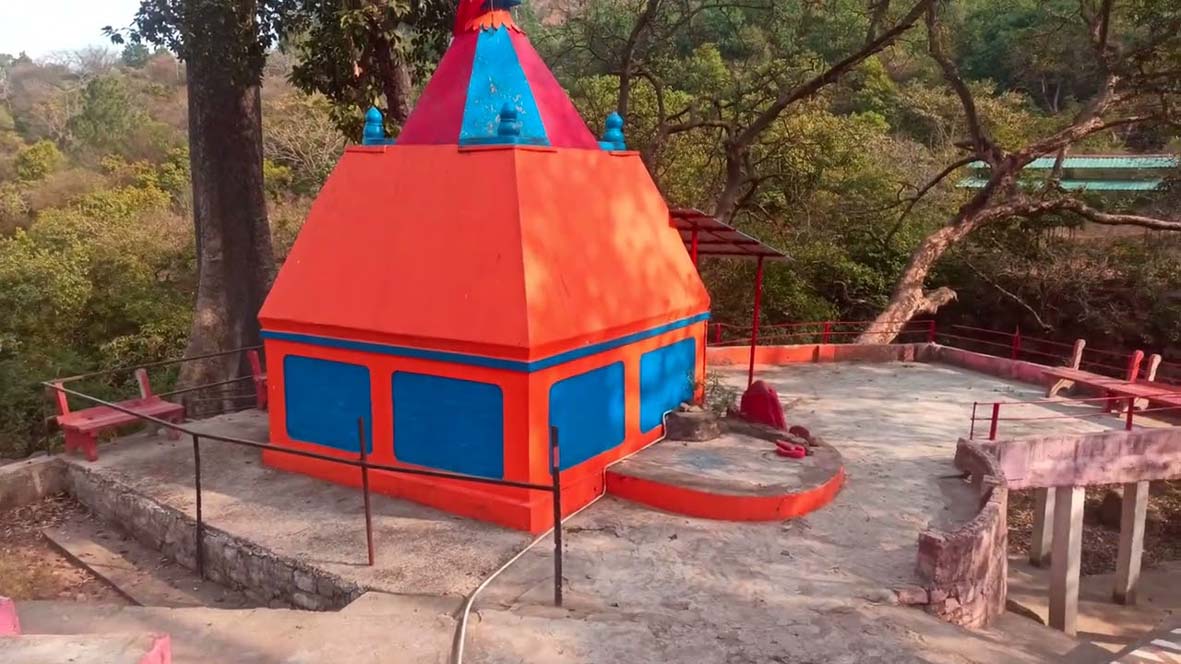Dr. Rakesh Verma
The tradition of sacred groves in India is rich in history, illustrating a cultural practice that has endured various historical epochs and religious changes. Revered since ancient times, these groves are significant in Indian culture, with archaeological evidence from sites like Bhimbetka showcasing the deep respect for certain plants. This long-standing reverence for nature has transcended India’s diverse religions, spanning early animism to the sophisticated belief systems of Hinduism, Buddhism, Jainism, Islam, and Sikhism.
Over 50,000 sacred groves have been identified across India, reflecting the extensive nature of this practice. Each grove is unique, shaped by the cultural and spiritual practices specific to the community that honors it. For example, the dev vans of Himachal Pradesh, Bhugyal of Uttarakhand, and the Sarpa Kavu of Kerala illustrate how local traditions influence the conservation of these natural spaces. Moreover, these groves often function as vital ecological sanctuaries, preserving a wide range of flora and fauna, including many endangered species.
Throughout different historical periods, sacred groves have evolved in response to shifting religious beliefs. During the Vedic era, for instance, the worship of sacred trees such as the peepal and Shami was common, highlighting early links between spirituality and nature. With the rise of Buddhism, additional layers of ecological respect emerged, while Jainism’s emphasis on non-violence further reinforced the sanctity of plant life.
Ecological Importance of Sacred Groves
Sacred groves function as essential ecological reserves that significantly contribute to biodiversity conservation and habitat protection. These unique ecosystems are characterized by a rich diversity of species, providing shelter for various threatened and endangered organisms. Beyond their biological diversity, sacred groves play a crucial role in maintaining ecological equilibrium within their environments.
Furthermore, they are vital for regulating water cycles, enhancing soil fertility, and maintaining climate balance. The vegetation within these groves stabilizes soil, prevents erosion, and improves water quality in surrounding regions. The interconnected species within these ecosystems foster resilience to environmental shifts, thereby supporting broader ecological networks.
Social and Cultural Importance
Sacred groves are essential cultural and social pillars in local communities, nurturing a deep sense of identity and belonging. They are not just ecological sanctuaries; they serve as important spaces for rituals, festivals, and community gatherings, reinforcing collective memory and cultural heritage. The relationship between these groves and their guardian communities is symbiotic, as they enhance social unity while symbolizing cultural pride.
In many areas, specific sacred groves are linked to local deities and ancestor spirits, becoming centers for worship and celebration. For instance, the Meenka Mahadev sacred grove in Sunderbani, Jammu and Kashmir, is esteemed not only for its biodiversity but also for its integral role in local religious festivals, where community members convene for prayers and rituals that honor their connection to divinity and nature. Such practices underscore the significance of these groves as sites of spiritual contemplation and cultural continuity.
Additionally, sacred groves often act as venues for community events, strengthening social bonds. Organizing local fairs and seasonal rituals centered around these groves fosters community collaboration and unity. The annual celebrations at the Sarpa Kavu of Kerala, which involve rituals dedicated to serpent deities, exemplify how such sacred spaces bring people together through shared beliefs and customs.
Case Study: Sacred Groves of Jammu and Kashmir
O. P. Sharma Vidhayarthi (Retd) IFS, Principal Chief Conservator of Forests, and noted environmentalist, documents around 181 sacred groves in Jammu and Kashmir in his work, “Sacred Grooves and Heritage Trees of Jammu and Kashmir.” These groves represent striking examples of ecological and cultural heritage, intricately linked to the spiritual lives of local communities. Noteworthy examples include the Trikuta Sacred Grove, Shiv Khori, and Meenka Mahadev, each embodying unique traits that contribute to their sacredness.
The Trikuta Sacred Grove, situated near the renowned shrine of Shri Mata Vaishno Devi, is celebrated not only for its breathtaking beauty but also for its diverse ecosystems, serving as a haven for numerous endemic plant species and wildlife. The local populace regards Trikuta as sacred, believing its preservation is vital for maintaining spiritual equilibrium.
In the tranquil depths of the Shiv Khori Sacred Grove, a devotion-infused atmosphere reigns as it honors Lord Shiva. This grove is recognized for its natural limestone caves, housing a naturally formed Shiva Lingam, and is abundant in medicinal plants cherished by local healers. The interdependent relationship between the flora and the community is evident, as locals protect these plants while practicing sustainable use, ensuring their availability for future generations. Festivals and rituals at Shiv Khori are vital to community life, attracting visitors from afar who come to pay homage and celebrate their cultural heritage.
Similarly, Meenka Mahadev serves a crucial role in Jammu and Kashmir’s cultural landscape. It is noted for its unique flora, including several trees deemed sacred by local communities. This grove functions as a centerpiece for various cultural festivities, where locals gather to perform rituals and celebrate their connection to both the divine and the natural world. The practices associated with Meenka Mahadev highlight the community’s understanding that safeguarding the grove is critical for preserving their cultural identity.
Threats and Challenges to Sacred Groves
Despite their ecological and cultural significance, sacred groves face numerous threats that endanger their existence. One of the primary challenges is urbanization, accelerated by population growth and development initiatives that encroach upon these sacred sites. As urban areas expand, sacred groves are frequently cleared for housing, infrastructure, and industrial activities, reducing their size and disrupting the delicate ecosystems they harbor. This urban sprawl not only jeopardizes biodiversity but also undermines the cultural practices linked to these groves as communities lose access to their sacred spaces.
Another significant threat is deforestation. The demand for timber, agricultural land, and fuelwood has led to extensive tree cutting, particularly in rural areas reliant on forest resources. The removal of trees disrupts the ecological balance within these groves, resulting in habitat loss for diverse plants and animals. This deforestation diminishes biodiversity and affects the spiritual bond that local communities maintain with these groves, as many traditions and rituals are connected to specific tree species.
Additionally, climate change exacerbates these challenges, posing new obstacles to the preservation of sacred groves. Shifts in temperature and precipitation can impact tree growth and health, leading to changes in ecosystem composition. The rising frequency of extreme weather events, such as floods and droughts, further risks the resilience of these groves. Such alterations can diminish the ecological functions these groves provide, including water regulation and soil stability, impacting surrounding environments and the communities dependent on those resources.
The combined pressures from urbanization, deforestation, and climate change significantly threaten both the ecological integrity and cultural importance of sacred groves. Protecting these vital spaces demands concerted efforts to raise awareness, implement effective conservation strategies, and engage local communities in sustainable practices that honor their rich cultural heritage while ensuring environmental protection.
Preservation Efforts and Legal Framework
A pivotal judgement by the Honorable Supreme Court on December 18, 2024, recognized the importance of sacred groves in Rajasthan, mandating their protection across the state and the nation. Community initiatives play a crucial role in preserving these groves. Local populations often engage in traditional practices that emphasize the sacredness of these areas, including establishing social taboos against tree cutting and hunting. Such measures reflect an inherent respect for nature. Community-led awareness programs educate members about the ecological significance of these groves, promoting a collective responsibility for their conservation. Furthermore, local rituals and festivals held at sacred groves strengthen community bonds and instill a sense of identity tied to these natural spaces.
On the governmental side, various schemes aimed at protecting and restoring sacred groves are in place. The Ministry of Environment, Forest and Climate Change has initiated programs to promote biodiversity conservation, with a specific focus on sacred groves as crucial components of India’s ecological legacy. Financial support for sustainable management and restorative projects is often allocated to local communities, empowering them to engage in conservation efforts. These initiatives encourage eco-tourism and sustainable harvesting practices, ensuring that the groves remain venerated and economically viable for the communities reliant on them.
In summary, the preservation of sacred groves in India is a collaborative effort encompassing local communities, government initiatives, and legal frameworks. These multifaceted approaches aim not only to protect the ecological integrity of sacred groves but also to honor the cultural and spiritual significance these sites hold for communities across the nation.
(The author is with J&K Forest Services)


Leave a Reply